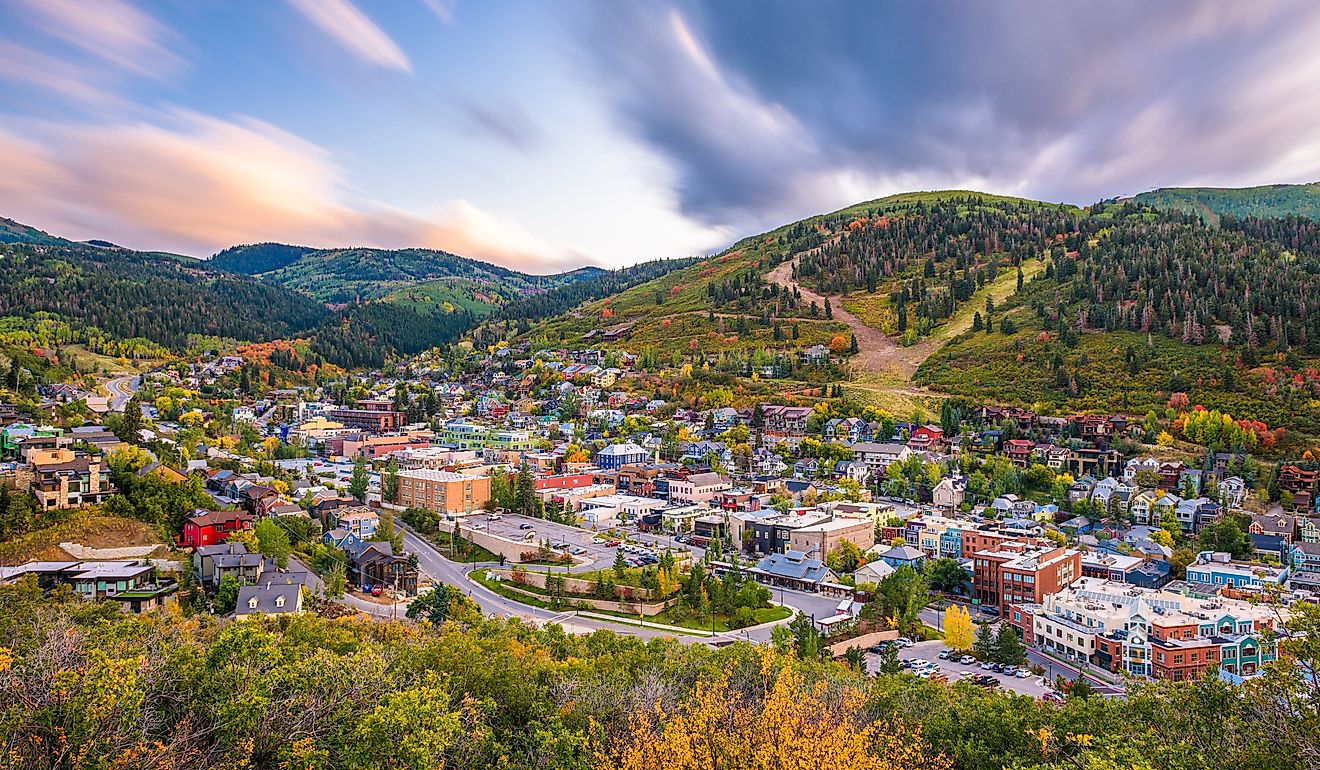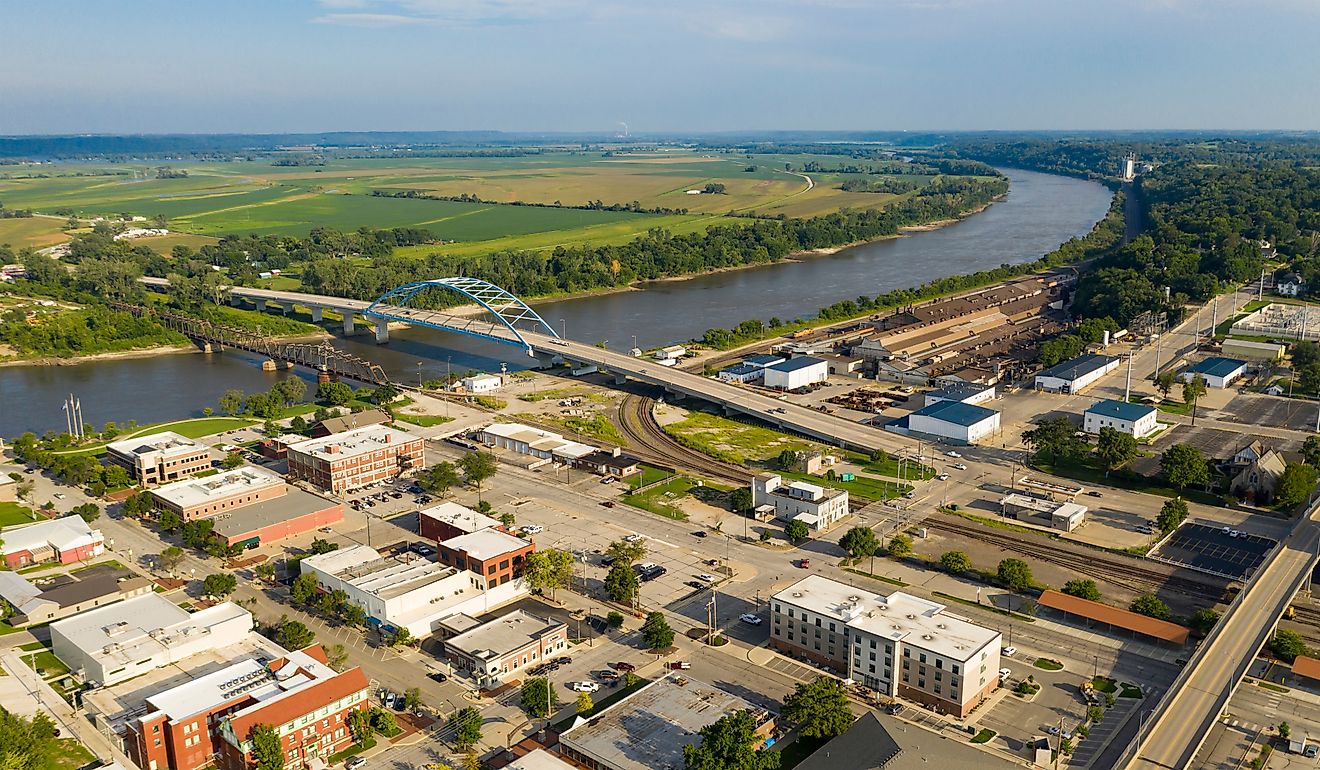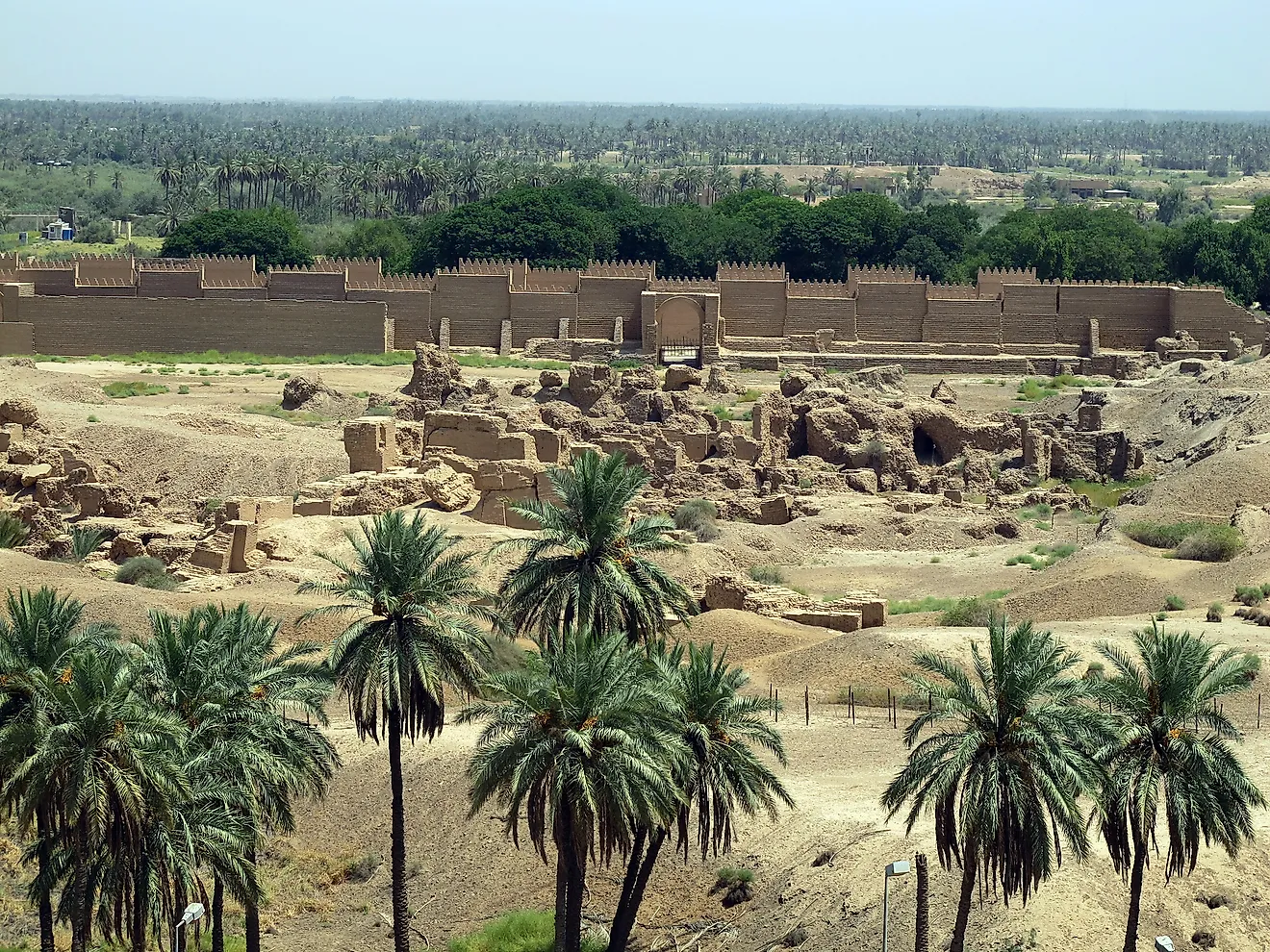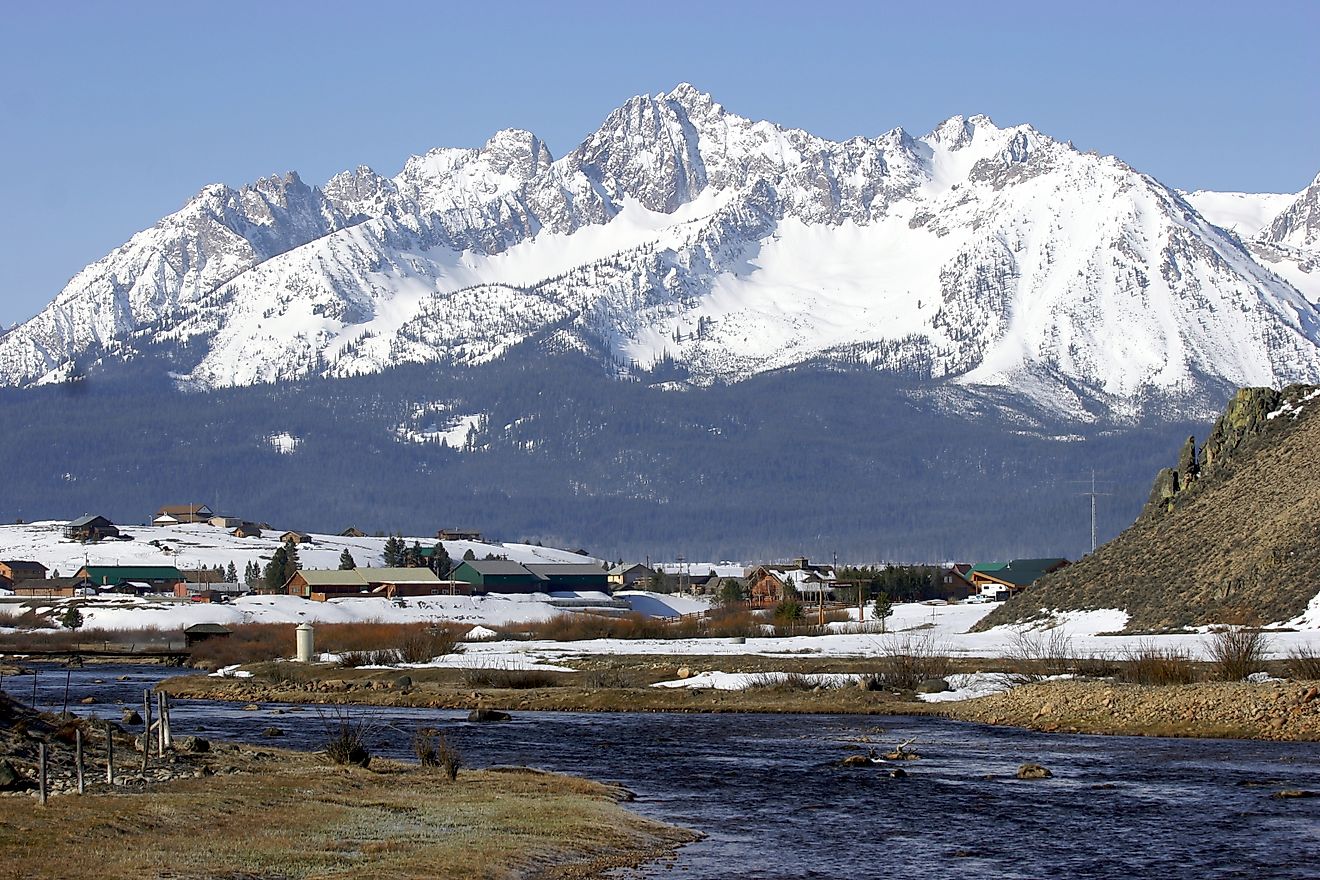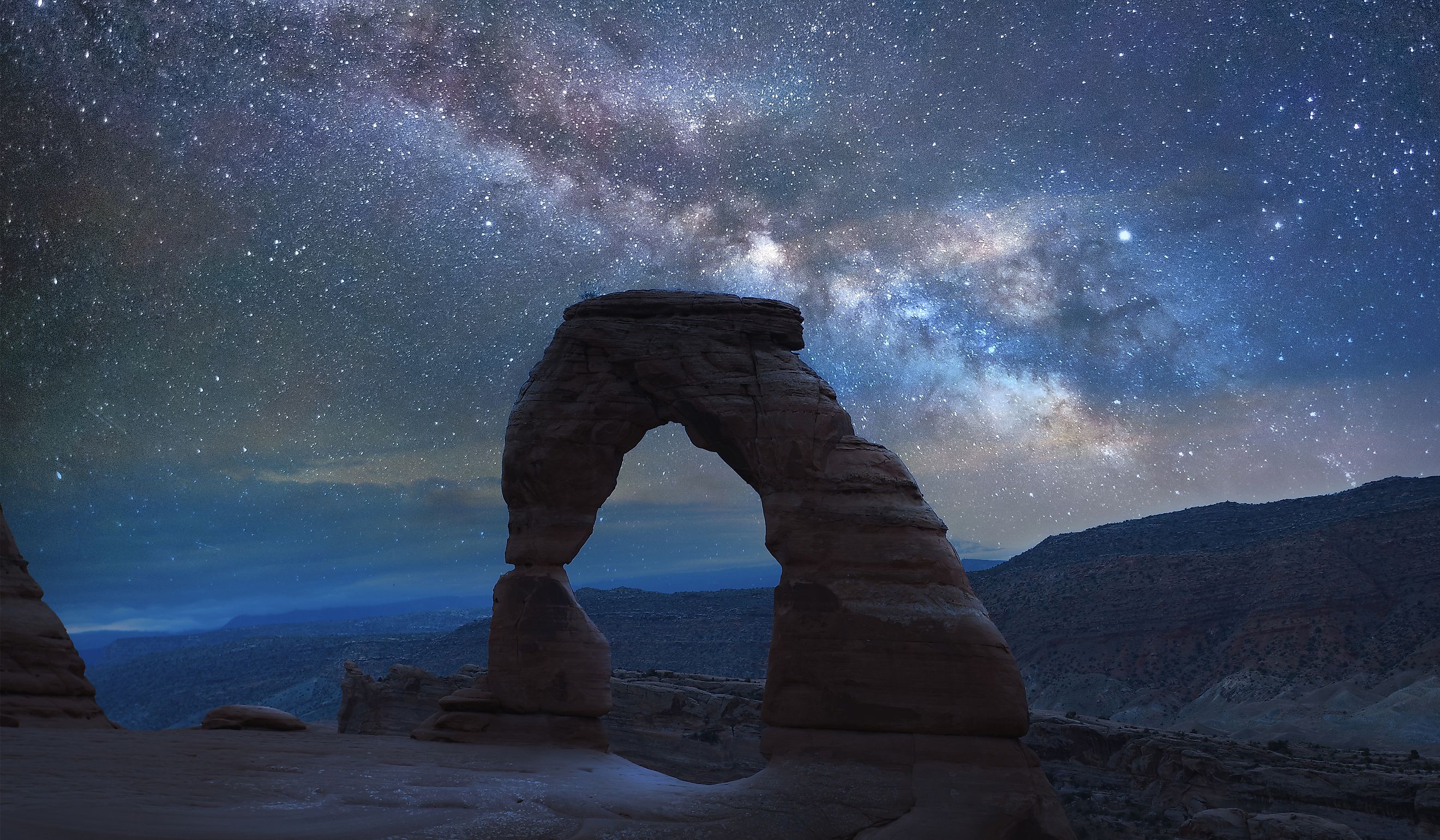
Chasing Moonlit Shadows Through Arches National Park
In Utah’s desert lies a red rock playground strewn with jagged canyons, shimmering sand dunes, and over 2,000 natural arches reaching high into the clear blue sky.
Every year Arches National Park welcomes over 1.5 million visitors to this otherworldly landscape. Some enjoy hiking its rocky canyons and incredible arches, others come to test their photography skills and go home with one-of-a-kind vacation shots. For many, the park’s biggest appeal is when the sun goes down and the moon comes out, casting brilliant shadows against the fiery sandstone.
It’s not hard to see why Arches is consistently ranked as one of the best national parks in the country. Formed over billions of years, the area’s topography isn’t just beautiful. It’s also highly unique and has delighted and inspired visitors for centuries.
A Brief History of Arches National Park
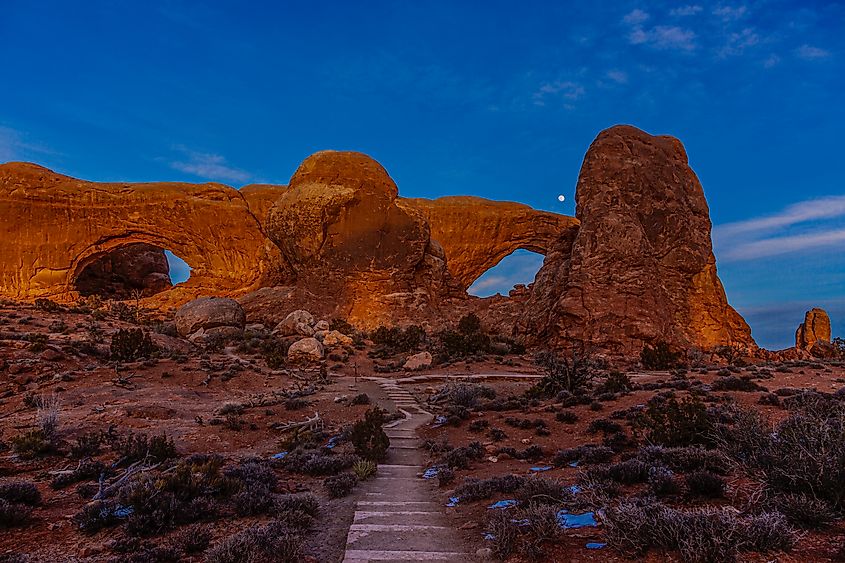
Arches National Park lies in southeast Utah, five miles north of Moab. It was established in November 1971, but its history can be traced even further back to April 1929, when President Herbert Hoover officially designated two parcels of land as the Arches National Monument.
The precursor to today’s park, these two areas were a 2,600 acre site known as ‘Devil’s Garden’ and a 1,600 acre site nicknamed ‘Windows’. Almost 50 years later, President Nixon abolished the Arches National Monument, expanding the protected area and renaming it Arches National Park.
Both Hoover and Nixon recognized the area’s significant educational and scenic value, but they weren’t the first to consider the arches a special spot. Two thousand years ago, ancestral Puebloans and nomadic Shoshonean people passed through the area, leaving behind drawings etched into the rocks. After them came waves of European settlers and traders, travelling through the inhospitable desert to California along the Old Spanish Trail. Now, US Highway 191, this former trading route, passes right outside the park’s Visitor Center.
Following the establishment of the Arches National Monument in 1929, the Civilian Conservation Corps got to work developing park infrastructure so visitors could navigate the area more easily. One of the last in the country, the CCC camp shut down at the outbreak of World War II, but not before building an entrance road, drainage culverts, office buildings, and a scenic drive.
The Park’s Unique Geology
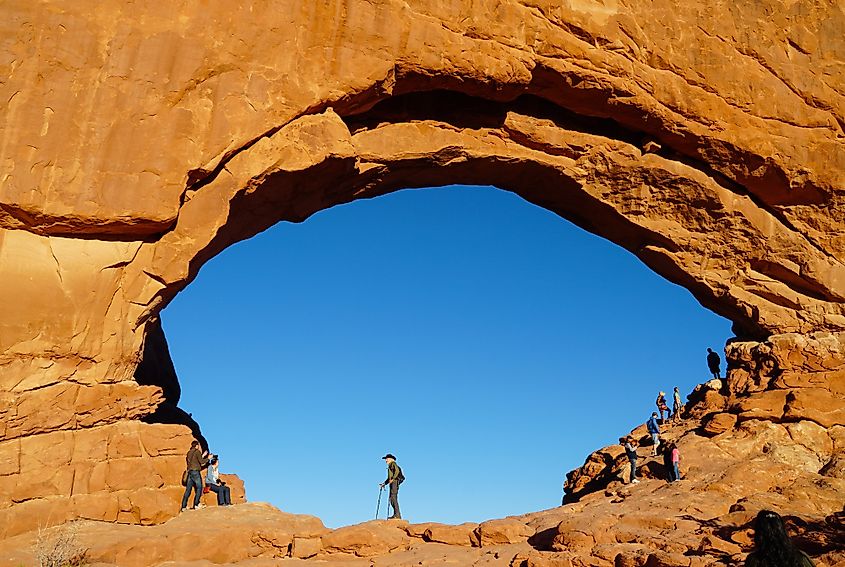
It’s no exaggeration to say that Arches National Park is like nowhere else on earth. The park contains the highest density of natural arches in the world. Formed over 65 million years, this unique high desert landscape is composed of layers of rock, warped and compressed by geologic forces.
This erosion and pressure form the canyons, arches, and natural rock sculptures visible in the park today. And it’s still changing. Arches are continuously falling and forming as the landscape evolves, but don’t worry, it’s such a slow process that it’s mostly undetectable to visitors.
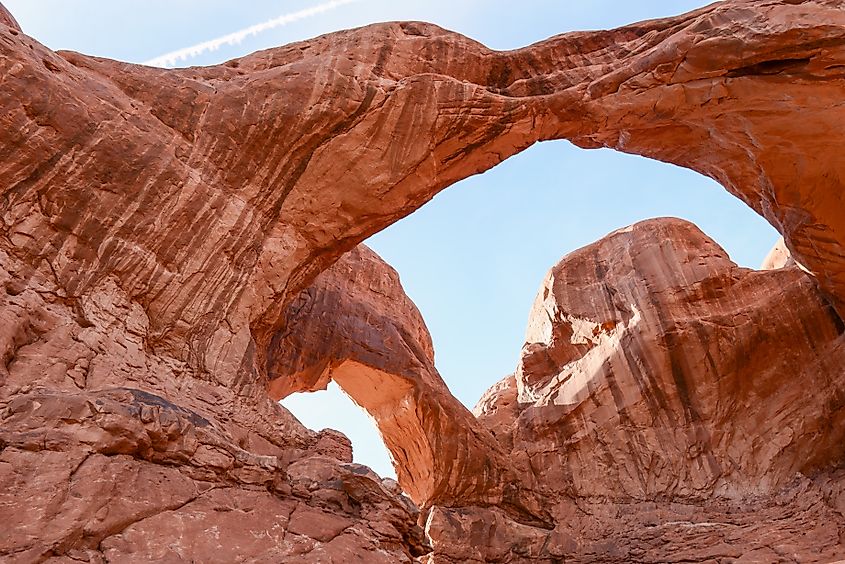
While the park is known for its signature red sandstone, you’ll actually find a range of hues in its breathtaking scenery. You may also see what looks like a striped pattern running down the rockface. This is known as ‘desert varnish’. Those darker orange or brown stripes are formed by water flowing over the rock face, which contains minerals and microorganisms that stain the surface.
The desert landscape of Arches National Park has another unique feature - it has some of the darkest skies in the United States. In 2019, Arches National Park was officially certified as an official International Dark Sky Park thanks to its lack of urban light pollution. You can see many stunning constellations with the naked eye in the park. With a pair of binoculars on a clear night, you may even be able to see the rings of Saturn.
Signature Landmarks and Natural Phenomena
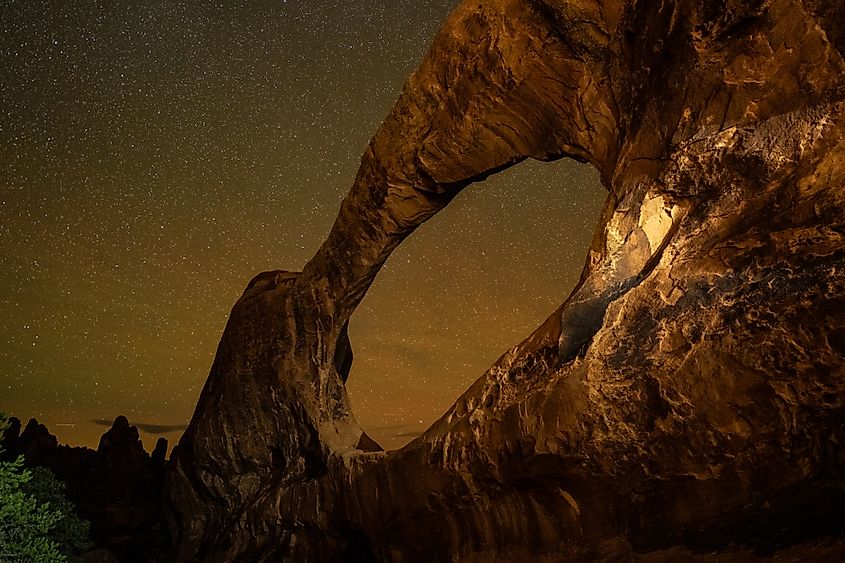
With so much to see and do at the park, it can be hard to know where to start. There are several significant landmarks that first-time visitors won’t want to miss however.
Known as the ‘heart of the park,’ the Windows are the jewel in the Arches' crown. This area contains a high concentration of notable arches, including North Window, Turret Arch, and Elephant Butte. It's a popular destination with night-time visitors too. Visiting the Windows at night allows visitors to see the night sky in a whole new way as the moon and stars light up the arches with their glittering incandescent glow.
A short drive from the Windows is one of the park’s most iconic landmarks, the Delicate Arch. At 46ft high, this is the largest free-standing arch in the park and is a stunning sight rising into the bright, blue desert sky. You can see the arch up close by hiking a 3 mile loop which goes right to the base and passes by another park must-see, the Ute Indian petroglyphs.
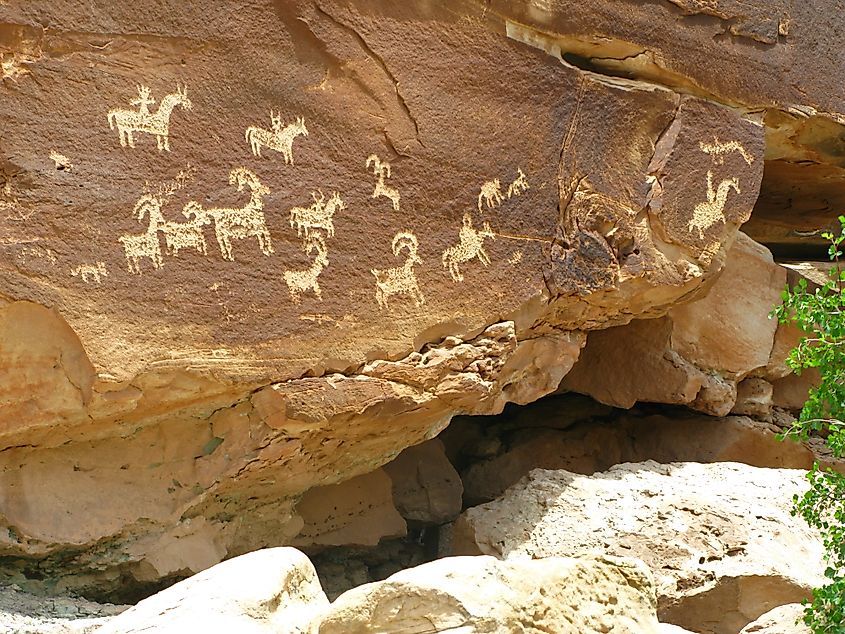
Wander around the park’s unique natural phenomena at Devil’s Garden, an area scattered with arches, spires, and narrow rock walls known as fins. This is also where you’ll find another record-breaker, Landscape Arch. The longest arch in North America, this 306 ft archway lost much of its rock in the 1990s and now seems to hang by a thread.
One of the busiest destinations in the park is the Fiery Furnace, a jaw dropping labyrinth of twisting, narrow passages between towering sandstone walls. It’s easy to lose your bearings in the Furnace so visitors are advised to take a ranger-led tour. If you do want to go it alone, you’ll need to reserve a permit in advance.
Things to Do in Arches National Park
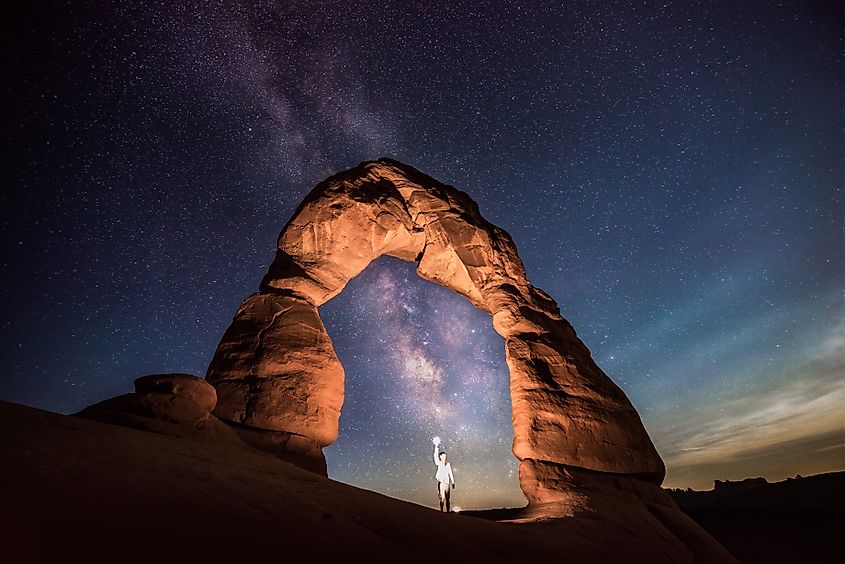
From hiking and canyoneering to rock climbing and star-gazing, there are lots of ways to explore the incredible geology of Arches National Park. Short hikes include the 0.3-mile Balanced Rock Viewpoint and Trail and the 0.4-mile Sand Dune Arch Trail, which involves a short walk through the sandy desert to a hidden arch not visible from the road. More experienced hikers will enjoy the challenging 2.6-mile Tower Arch Trail, which climbs up a steep rock wall before meandering through rock sculptures and sand dunes.
Canyoneering is permitted in the park, but groups must obtain a permit beforehand and stick to approved routes. Rock climbing is also allowed, but only advisable for experienced climbers. It’s a good idea to register for a free permit before you climb. This can be done at the Visitor Center on the day of your arrival.
For many visitors, the park’s incredible landscape is best seen at night. Out in the desert, with no urban light to block the view, the night sky becomes a magical, star-strewn canopy. Plan your visit in time to catch a full moon and find yourself chasing moonlit shadows through Arches National Park’s fiery sandstone windows.
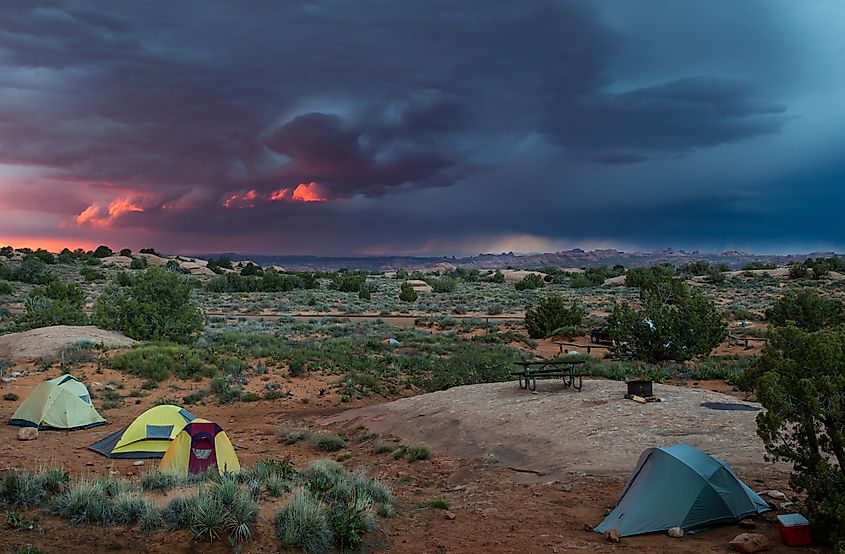
If you’re planning on staying overnight at the park, the Devil’s Garden Campground is 18 miles from the park entrance. The camp fills up quickly, so reservations are highly recommended. You can book a site between March and October, reserving up to 6 months in advance. Between February and November, campsites are first-come, first-served.
Backcountry camping is only allowed in four designated sites in the Courthouse Wash and Devil’s Garden areas. Permits are required, and these need to be obtained in person from the Backcountry Permit Office located in Moab. Just five miles from the park, Moab is also an option if you’d like to stay nearby. Accommodation ranges from motels and hotels to Bed and Breakfasts and boutique hotels.
Tips for Visitors to Arches National Park

Arches National Park is open year-round, 24 hours a day, but its busiest months are between March and October. If you’re visiting during the high season, consider arriving early in the morning or evening to avoid the daytime crowds. The park recently began using a Timed Entry system to manage the skyrocketing number of visitors. This currently runs from April 1 to July 6 and from August 28 to October 31, and reservations can be made online up to six months in advance.
In the summer months, the desert can get extremely hot, so try to avoid strenuous activity around midday and early afternoon when the sun is at its peak. Wear a hat, apply sunscreen, and take plenty of water if you’re hitting the trails. In the winter, evenings can get chilly, so bring extra layers if you plan on stargazing, and don’t forget to check the weather forecast and lunar calendar. The darkest skies appear with a new moon or when the moon is low on the horizon.
It may be the desert, but there’s still some plant life blooming in the park. If you want the best chance of seeing the Utah wildflowers in all their glory, visit during April or May when they’re bursting into color. If you’re more interested in fauna than flora, bear in mind that most of the park’s wildlife prefers to sleep through the harsh daytime temperatures, so there’s more animal activity at dusk and in the evenings. Keep an eye out for deer, bobcats, owls, coyotes, and jackrabbits. There have even been a few black bear sightings within the park boundary.
Magic and Adventure Among the Arches
Arches National Park is a special place. A place that’s seen wars fought, empires fall, and civilisations change — all while carving layer upon layer of rock in an eternally evolving sculpture.
Stunning in every season, the park is a must for vacation bucket lists. Immerse yourself in the awesome power of mother nature, soaking up the breathtaking scenery and making memories that will last a lifetime. Arches National Park is where you go when you want an adventure like no other.



